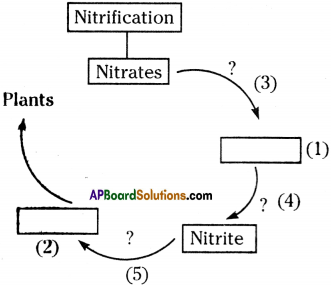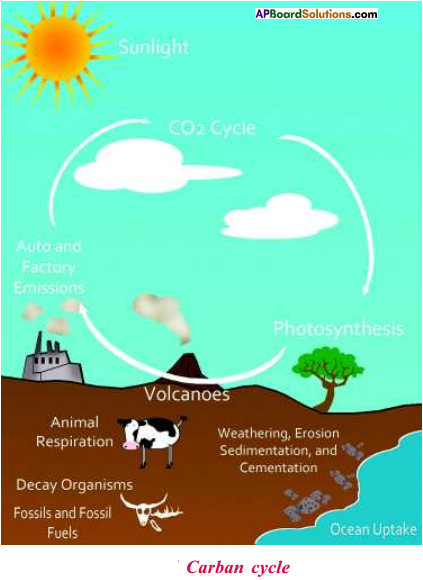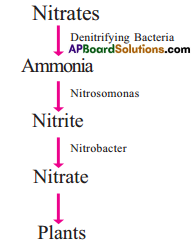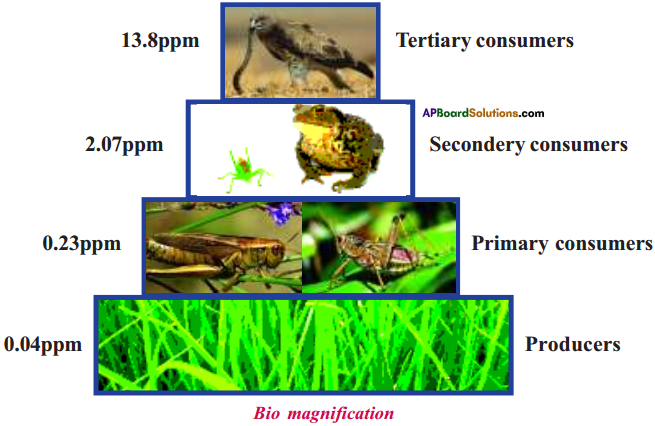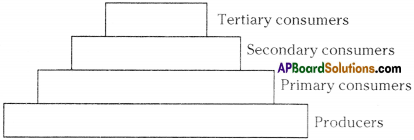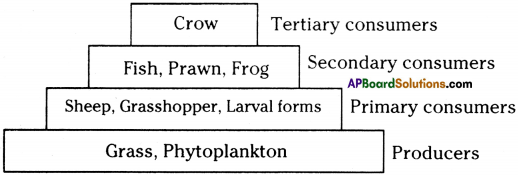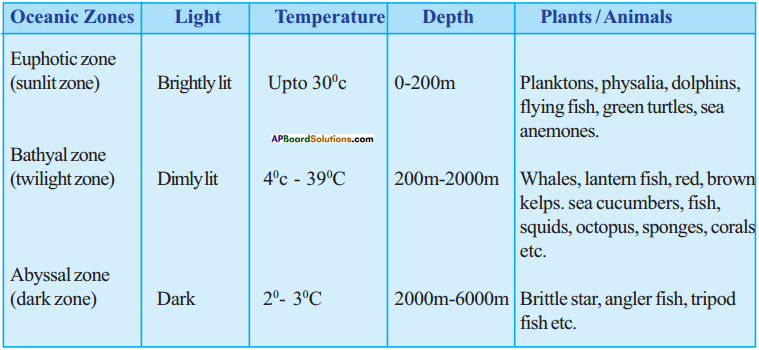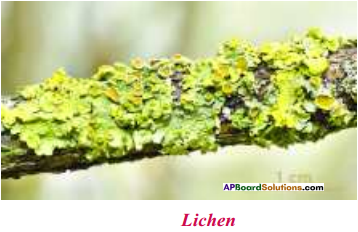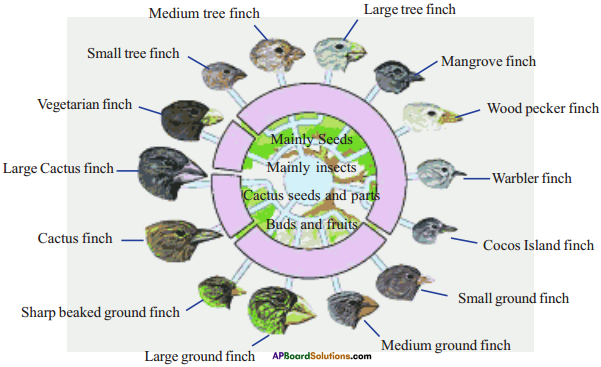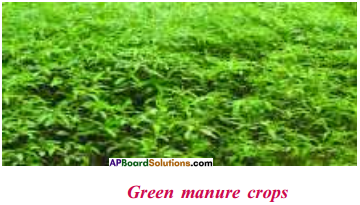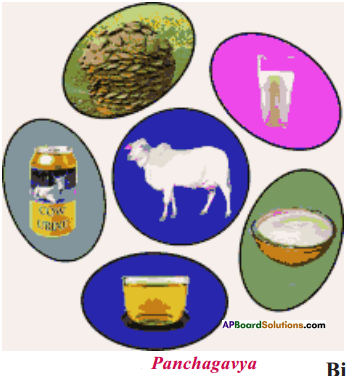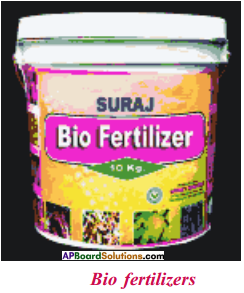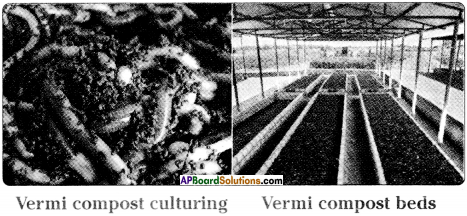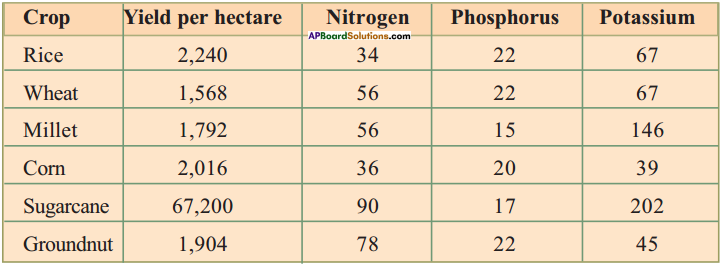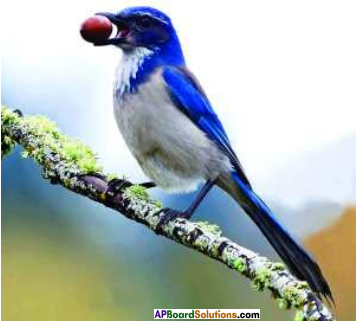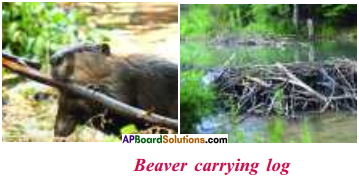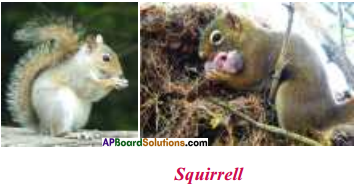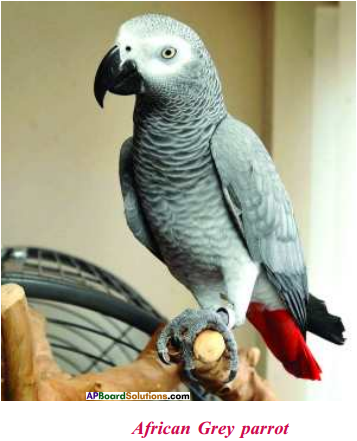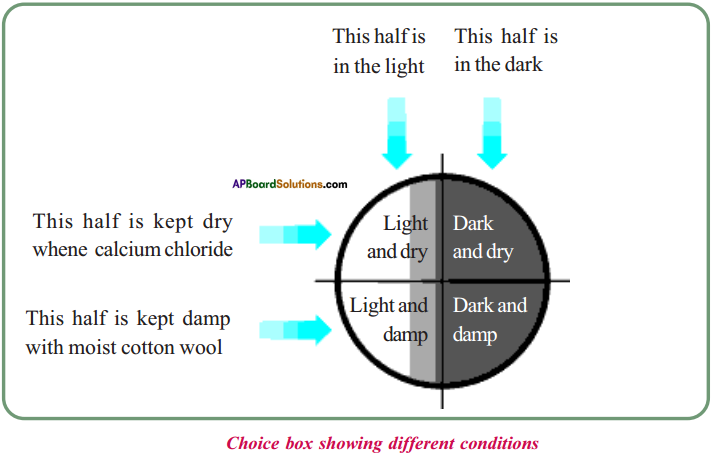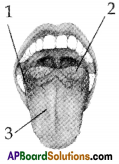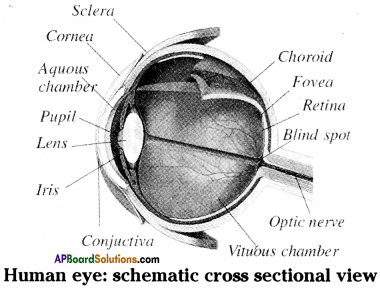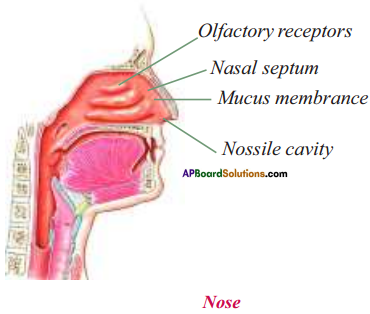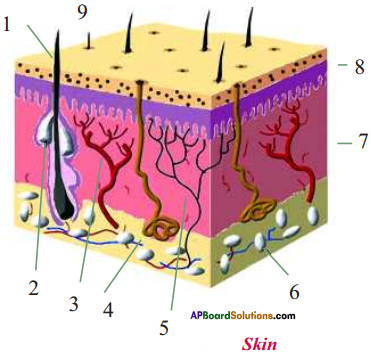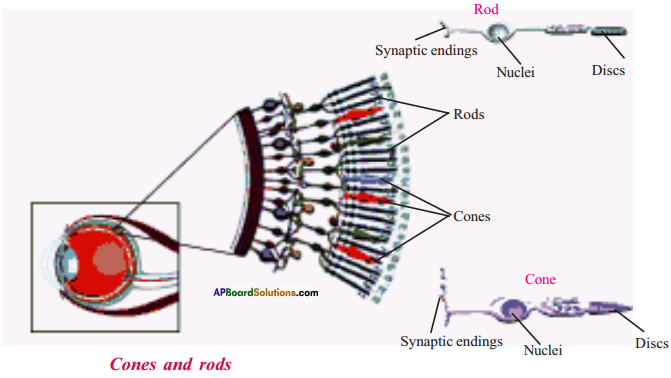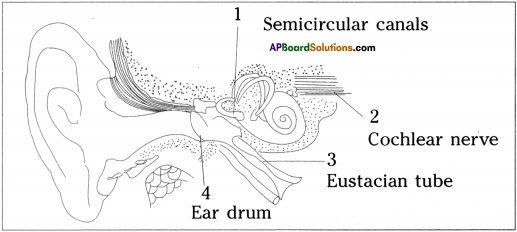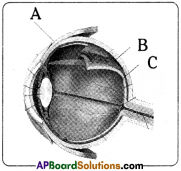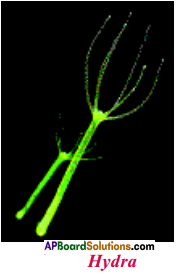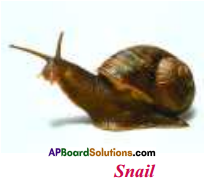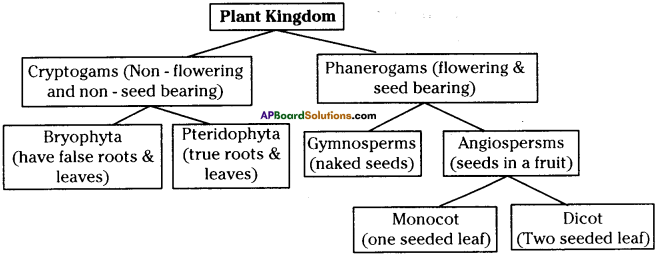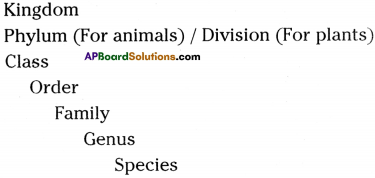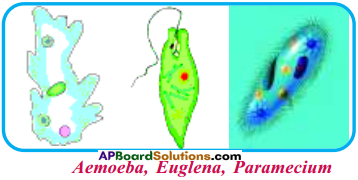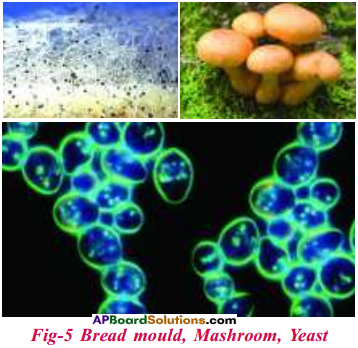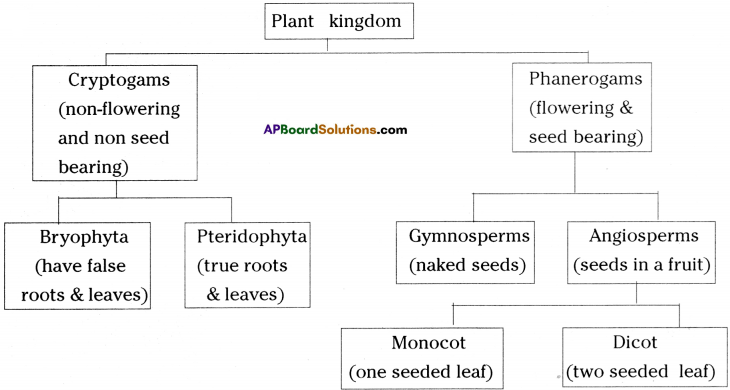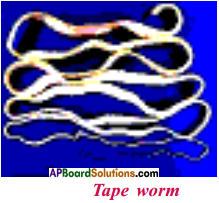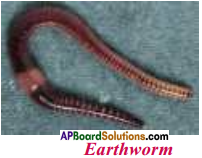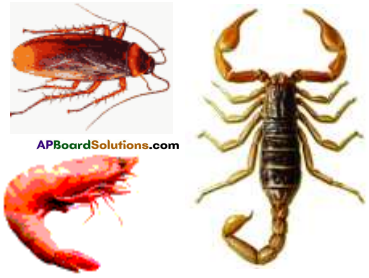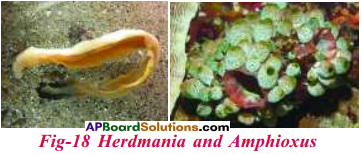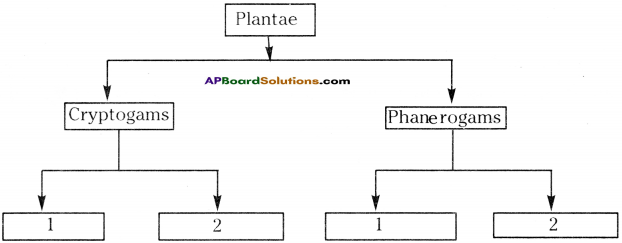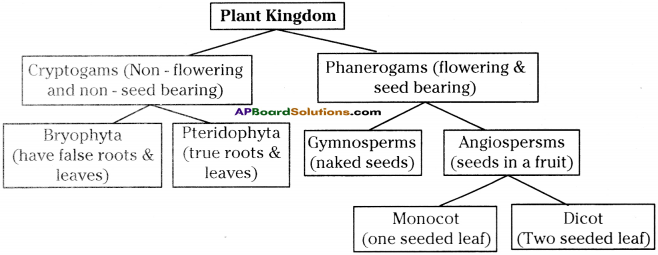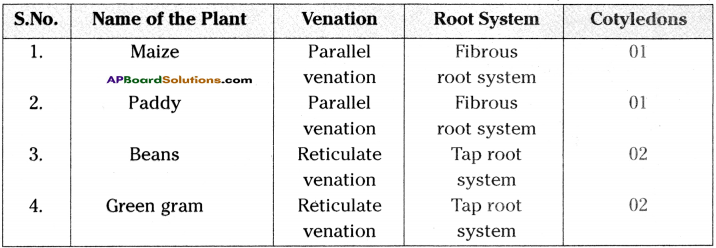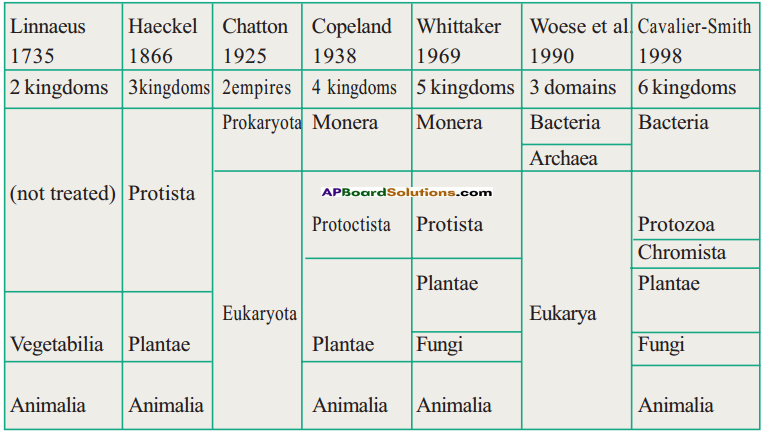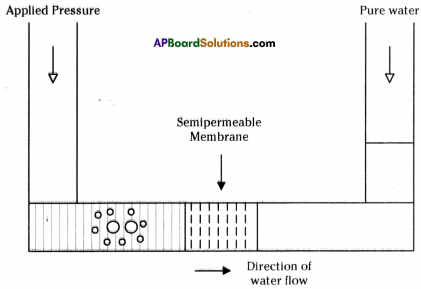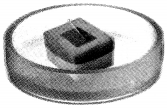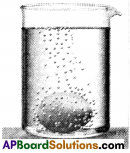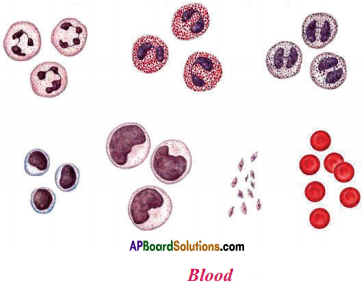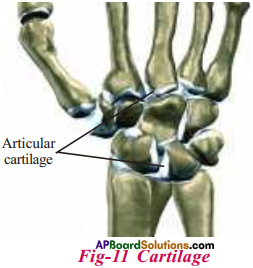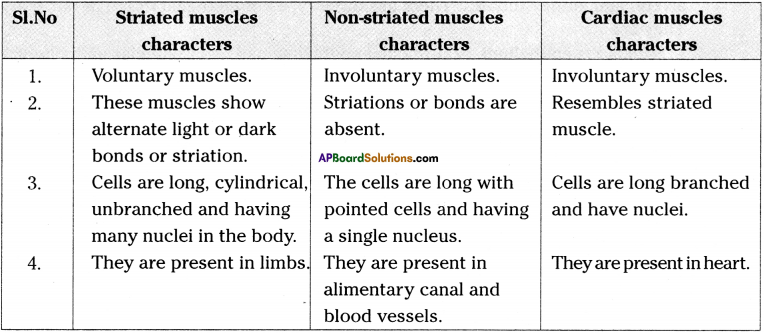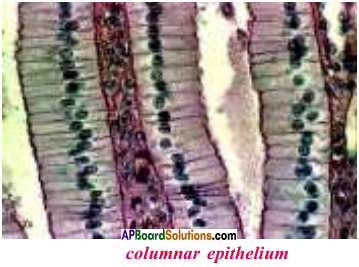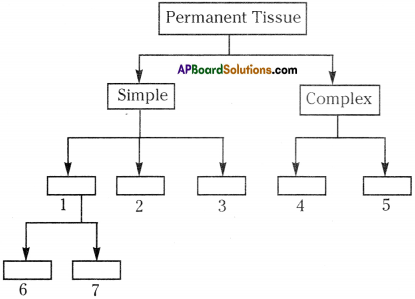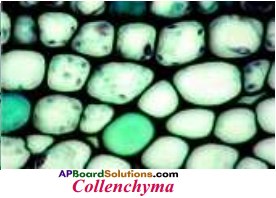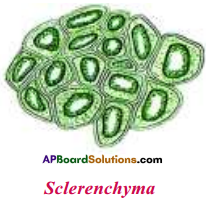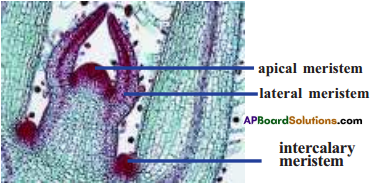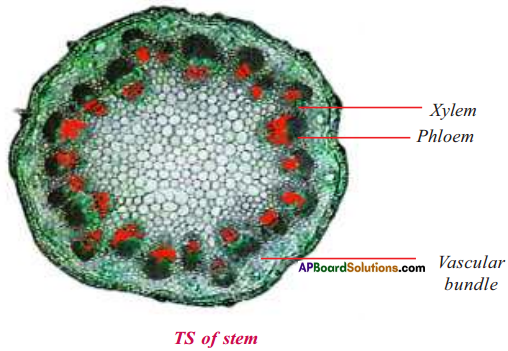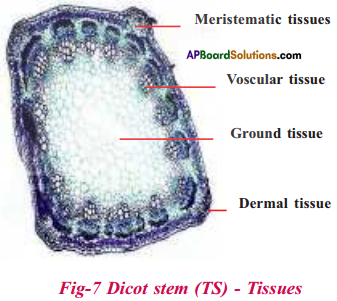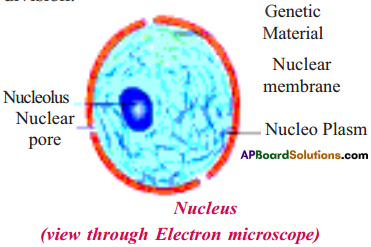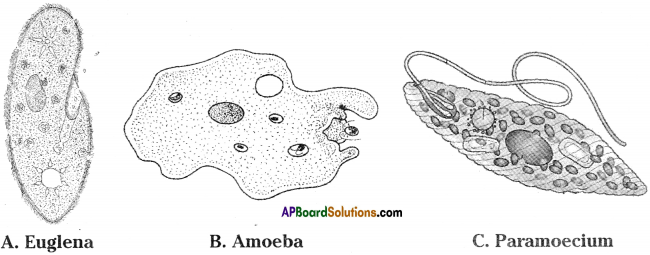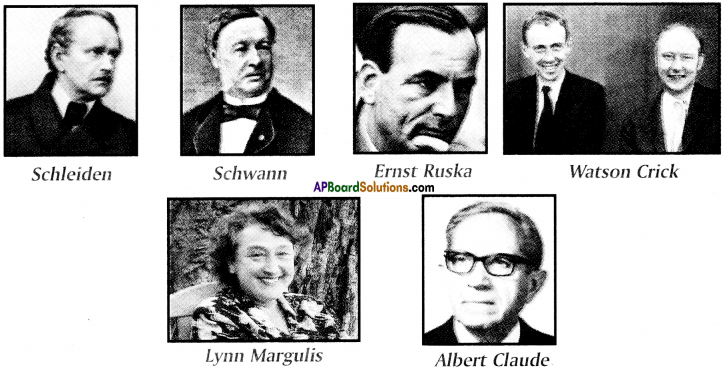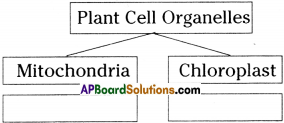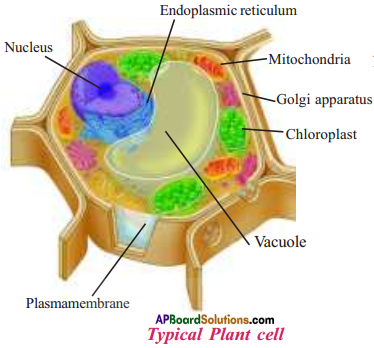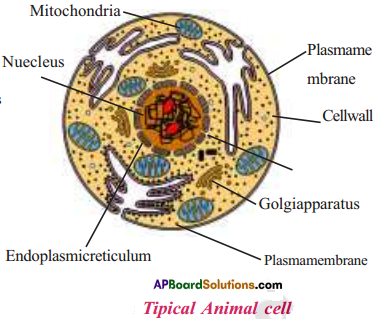AP State Syllabus AP Board 9th Class Maths Solutions Chapter 1 Real Numbers Ex 1.1 Textbook Questions and Answers.
AP State Syllabus 9th Class Maths Solutions 1st Lesson Real Numbers Exercise 1.1
Question 1.
a) Write any three rational numbers.
Solution:
\(\frac{3}{4}, \frac{5}{9}, \frac{2}{7}\)
b) Explain rational number is in your own words.
Solution:
A number which can be expressed in algebraic form i.e., in \(\frac { p }{ q }\) form is called a rational number.
E.g.: \(\frac { 3 }{ 5 }\), \(\frac { -4 }{ 9 }\) etc.
![]()
Question 2.
Give one example each to the following statements.
i) A number which is rational but not an integer.
Solution:
7/11
ii) A whole number which is not a natural number.
Solution:
‘0’ (Zero)
iii) An integer which is not a whole number.
Solution:
-8
iv) A number which is natural number, whole number, integer and rational number.
Solution:
5
v) A number which is an integer but not a natural number.
Solution:
-4
Question 3.
Find five rational numbers between 1 and 2.
Solution:
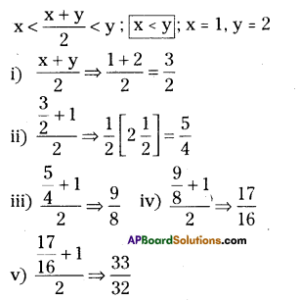

![]()
Question 4.
Five rational numbers between \(\frac { 2 }{ 3 }\) and \(\frac { 3 }{ 5 }\)
Solution:
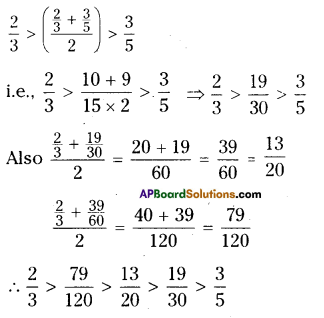
Question 5.
Represent \(\frac { 8 }{ 5 }\) and \(\frac { -8 }{ 5 }\) on a number line.
Solution:

Step – 1 : Draw a number line.
Step – 2 : Divide each unit into 5 equal parts.
Step – 3 : Take 8 – equal parts from ‘0’ on its right side and mark it as \(\frac { 8 }{ 5 }\) (similarly) on left side \(\frac { -8 }{ 5 }\) .
Question 6.
Express the following rational numbers as decimal numbers.
Solution:
I. i) \(\frac { 242 }{ 1000 }\) .
ii) \(\frac { 354 }{ 500 }\) .
iii) \(\frac { 2 }{ 5 }\) .
iv) \(\frac{115}{4}\)
Solution:
i) \(\frac { 242 }{ 1000 }\) = 0.242
ii) \(\frac{354}{500}\)
\(=\frac{354 \times 2}{500 \times 2}\)
\(=\frac{708}{1000}\)
\(=0.708\)
iii) \(\frac{2}{5}\)
\(=\frac{2 \times 2}{5 \times 2}\)
\(=\frac{4}{10}\)
\(=0.4\)
iv)

![]()
II. i) \(\frac{2}{3}\)
Solution:

ii) \(\frac{-25}{36}\)
Solution:
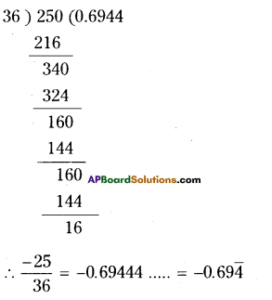
iii) \(\frac{22}{7}\)
Solution:
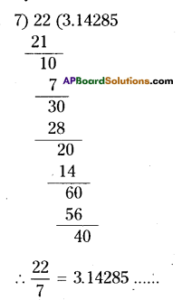
iv) \(\frac{11}{9}\)
Solution:
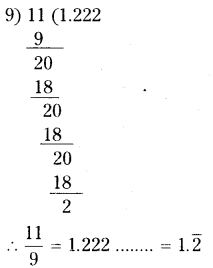
![]()
Question 7.
Express each of the following decimals in \(\frac{p}{q}\) form where q ≠ 0 and p, q are integers.
i) 0.36
Solution:
0.36 = \(\frac{36}{100}=\frac{9}{25}\)
ii) 15.4
Solution:
15.4 = \(\frac{154}{10}=\frac{77}{5}\)
iii) 10.25
Solution:
10.25 = \(\frac{1025}{100}=\frac{41}{4}\)
iv) 3.25
Solution:
3.25 = \(\frac{325}{100}=\frac{13}{4}\)
Question 8.
Express each of the following decimal number in the \(\frac { p }{ q }\) form.
i) \(0 . \overline{5}\)
Solution:
Let x = \(0 . \overline{5}\) = 0.5555
Multiplying both sides by 10

ii) \(3 . \overline{8}\)
Solution:
Let x = \(3 . \overline{8}\)
(i.e) x = 3.888 ………..
Multiplying both sides by 10

![]()
iii) \(0 . \overline{36}\)
Solution:
Let x \(0 . \overline{36}\)
(i.e) x = 0.363636 ………..
Multiplying by 100 on both sides
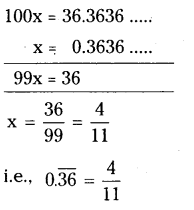
iv) \(3.12 \overline{7}\)
Solution:
Let x = \(3.12 \overline{7}\)
x = 0.12777
Multiplying by 10 on both sides
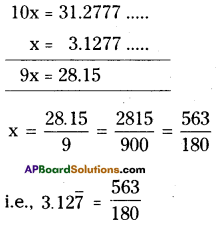
Question 9.
Without actually dividing find which of the following are terminating
decimals.
i) \(\frac { 3 }{ 25 }\)
Solution:
Check the denominator, if it consists of 2’s or 5’s or combination of both then only it reduces to a terminating decimal.
25 = 5 x 5
Hence \(\frac { 3 }{ 25 }\) is a terminating decimal.
ii) \(\frac { 11 }{ 18 }\)
Solution:
Denominator 18 = 2 × 3 × 3,
hence \(\frac { 11 }{ 18 }\) is a non-terminating decimal 13
iii) \(\frac { 13 }{ 20 }\)
Denominator 20 = 2 × 2 × 5,
hence \(\frac { 13 }{ 20 }\) is a terminating decimal.
iv) \(\frac { 41 }{ 42 }\)
Solution:
Denominator 42 = 2 × 3 × 7,
hence \(\frac { 41 }{ 42 }\) is a non-terminating decimal.
![]()
